Although there have been scores of children’s books published on Harriet Tubman, there are few full scale biographies for adults.
The first book about Tubman was published in 1869 with the assistance of Tubman herself who was nearly destitute and hoped sales from the book would provide some much needed financial assistance for her and her family.
The next Tubman biography wasn’t published until 1942. That book, titled Harriet Tubman: Negro Soldier and Abolitionist, was written by a journalist named Earl Conrad who had great difficulty finding a printer due to widespread racial bias at the time against African-American history. The book quickly went out of print after publication and has remained out of print ever since.
Over 60 years passed until another Tubman biography was published, starting with Jean Humez book in 2003 and Larson and Clinton’s books in 2004.
Despite the lack of books to choose from, I’ve compiled a list of what are considered the best books about Harriet Tubman.
These books have great reviews on sites like Amazon and Goodreads, they are best-sellers on the topic and they have great reviews from critics. I’ve also used many of these books in my research for this website so I can personally say they are some of the best on the topic.
The following is a list of the best books about Harriet Tubman:
(Disclaimer: This article contains Amazon affiliate links. As an Amazon Associate I earn from qualifying purchases.)
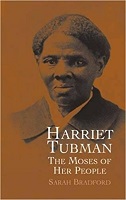 1. Harriet Tubman: The Moses of Her People by Sarah Bradford
1. Harriet Tubman: The Moses of Her People by Sarah Bradford
Originally published in 1869, under its original title of Scenes in the Life of Harriet Tubman, and later updated in 1886, this biography was dictated by Harriet Tubman herself. It is a firsthand account of Tubman’s life from her childhood up to the post-War era.
Since Tubman lived until 1913, it only covers part of her life but what it does cover is fascinating. The book discusses Tubman’s childhood as a slave, her time as a conductor on the Underground Railroad, her work as a Civil War nurse and her efforts to educate former slaves after the war.
The book was written to raise badly needed funds for Tubman, who was living in poverty and often spent whatever money she had helping the less fortunate.
According to an article written by fellow Tubman biographer Earl Conrad, the publishing costs of the book were paid for by abolitionists Wendell Phillips and Gerrit Smith and by William H. Seward, Jr, the son of Abraham Lincoln’s Secretary of State, William H. Seward, Sr.
The book was intended to have a section about Tubman’s time in the war, that was to be written by Charles P. Wood, a banker who had worked as a recruiter during the war, but it was never included in the book because it was instead used as testimony by Seward to Congress in his quest to secure a military pension for Tubman.
Fellow Tubman biographer Jean Humez referred to this book as “the most detailed biography of Tubman written during her lifetime.”
According to Humez, the book came about due to Tubman’s storytelling skills:
“Harriet Tubman told stories, sang songs, and performed dramatic re-enactments of many of the life experiences she considered most significant (and most entertaining as well) on public platforms, in private gatherings, in formal interviews, and in conversations with close associates, family members, and visiting strangers over a span of more than sixty years in the North. Her early storytelling performances were memorable events for her listeners, as many of them testified afterward. These sessions helped create a market for the collaborative biography she produced with Sarah Hopkins Bradford three years after the war, a narrative of nearly a hundred pages called Scenes in the Life of Harriet Tubman (1869.) This was actually a patchwork collection of interview-based stories and documentary materials, prepared in haste. Later Bradford revised and expanded it twice, in 1886 and 1901, and renamed it Harriet, the Moses of Her People. Taken together, the three versions of the Bradford biography contains almost all the important stories of her Underground Railroad career and war service that have survived. All later biographers, even if they also interviewed Tubman, relied at least in part on information (and misinformation) from Bradford.”
Another fellow Tubman biographer, Milton C. Sernett, also agrees that Bradford’s biography has influenced all the Tubman biographies that came after hers:
“First issued in 1869, then revised and enlarged in an 1886 edition, Bradford’s rendition of the Tubman story has infected, for good or for ill, almost all subsequent biographical portraits.”
Sarah Bradford, who died in 1912, was a writer who was mostly known for writing children’s books. Bradford was one of the first Caucasian writers to write about African-American topics and one of the first American women writers to write children’s literature.
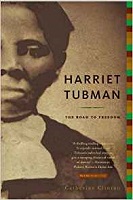 2. Harriet Tubman: The Road to Freedom by Catherine Clinton
2. Harriet Tubman: The Road to Freedom by Catherine Clinton
Published in 2004, this book discusses the more well-known events of Tubman’s life as well as the lesser known events such as her role in liberating hundreds of slaves during a raid in the Civil War, as well as the heartbreak of her first marriage and her time as a Civil War nurse.
Clinton explained in the book’s preface that the lack of historical biographies on Tubman are due to a failure on the part of the academic world and is a form of “disremembering” where Tubman is frequently mentioned and referenced but few sources bother to set the record straight about her role and contributions. Clinton explains that she wrote the book in the hopes of humanizing Tubman by letting people see her as a real person in addition to a historic icon.
Clinton’s book received positive reviews when it was published, although some critics have noted that it reads more like an adventure story than a historical work.
Drew Gilpin Faust reviewed the book for the New York Times and said it was not as well researched as other Tubman biographies:
“Catherine Clinton’s ‘Harriet Tubman: The Road to Freedom’ is much less richly researched and less detailed, but draws on the extensive historical writing of recent years about slavery and Civil War to place Tubman’s life within its times — through descriptions of the black Philadelphia in which she found herself after her escape in 1849, of the history of the Underground Railroad, of the impact and aftermath of the Fugitive Slave Law of 1850, of the experiences of war in the coastal South. Clinton, whose books include ‘Fanny Kemble’s Civil Wars,’ frequently speculates about what she cannot know, with such interjections as ‘one can imagine’ or ‘there is every reason to believe.'”
Publisher’s Weekly deemed the book a “revelation” and praised Clinton’s skill at distinguishing speculation from fact:
“Clinton has an extraordinary knack of compressing complex history into an informing brief paragraph or a single sentence, making this ‘first full-scale biography’ of Tubman (1825–1913) a revelation….Clinton is meticulous (without being annoying) in distinguishing the speculative from the known in Tubman’s private life…In her hands, a familiar legend acquires human dimension with no diminution of its majesty and power.”
Catherine Clinton is the Denman Professor of American History at the University of Texas at San Antonio.
Clinton is the author and editor of nearly thirty books on American history including Mrs. Lincoln: A Life; The Plantation Mistress: Women’s World in the Old South; The Devil’s Lane: Sex and Race in the Early South; When Harriet Met Sojourner.
Clinton has served on the executive council of the Society of American Historians, on the Advisory Committee of the Abraham Lincoln Presidential Bicentennial Commission, and is currently on advisory boards for Civil War History, Civil War Times, The President’s Cottage and Soldier’s Home, and Ford’s Theatre. In November 2016, Clinton served as President of the Southern Historical Association.
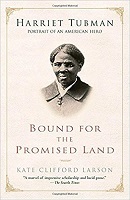 3. Bound for the Promised Land: Harriet Tubman, Portrait of an American Hero by Kate Clifford Larson
3. Bound for the Promised Land: Harriet Tubman, Portrait of an American Hero by Kate Clifford Larson
Published in 2004, this book discusses Tubman’s accomplishments, personal life and her influences. The book dispels the myths and misconceptions about Tubman and provides a complete profile of the American hero.
In the book’s introduction, Larson argues that Tubman’s impressive accomplishments have turned her into a mythical figure who seems to be more legend than truth.
Larson explains that she wanted to correct this by writing a detailed, historically accurate biography about Tubman to help shed light on who she really was:
“The reality of Harriet Tubman’s life is far more compelling than the partly fictionalized biography so familiar to schoolchildren. Why have we been satisfied with the mythical Tubman and why has her biography remained within the province of children’s literature? Although the myths are rooted in actual achievements and serve to enhance the legend of Harriet Tubman, they do so at the expense of her real life story. The true facts of Tubman’s long life, including her years under slavery, her family life, her profound spirituality, her accomplishments as a freedom fighter from her Underground Railroad days to her Civil War exploits and then later her suffrage and community activism, reveal a remarkably powerful and influential life endured during some of the darkest days in American history. Motivated by a deep love of family, Tubman struggled against great odds to bring scores of relatives and friends to freedom in the North. Necessarily shrouded in secrecy at the time, the details of her escape missions have been buried in the historical record for generations. There is, therefore, a need to rediscover Harriet Tubman, to separate reality from myth and to reconstruct a richer and far more accurate historical account of her life.”
To shed new light on Harriet Tubman, the book relies on newly discovered documents, court records, wills, letters, newspaper accounts and genealogical records.
Drew Gilpin Faust reviewed the book for the New York Times, along with several other recent Tubman biographies, and said the book is meticulously researched and provides a lot of details, even though some of the details are not always useful:
“Larson and Humez tend to conjecture less and instead to supply the reader with the considerable information they have collected — sometimes, it seems, more because they have found it than because it adds significantly to our understanding of Tubman’s life.”
Kate Clifford Larson is an author who has written a number of books about women in history such as Rosemary: A Hidden Kennedy Daughter and the Assassin’s Accomplice: Mary Surratt and the Plot to Kill Abraham Lincoln.
Larson also wrote an article titled Racing for Freedom: Harriet Tubman’s Underground Railroad Network Through New York for Afro-Americans In New York Life and History, Vol. 36 No. 1, January 2012.
Larson is the consultant for the Harriet Tubman Special Resource Study of the National Park Service and is a member of the advisory board of the Historic Context on the Underground Railroad in Delaware, Underground Railroad Coalition of Delaware.
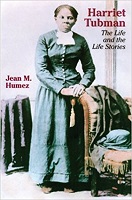 4. Harriet Tubman: The Life and the Life Stories by Jean Humez
4. Harriet Tubman: The Life and the Life Stories by Jean Humez
Published in 2004, this book discusses new biographical information as well as old stories and legends about Harriet Tubman.
The book aims to expose the lesser known aspects of Tubman and her life that have been overshadowed by her larger-than-life public image as an American hero.
In the introduction to the book, Humez explains that she wanted to provide a thorough overview of the complex person that Tubman was and hoped to inspire readers to continue the hunt for more lost documents and information about Tubman:
“In providing my own biographical overview in this book (part 1, “The Life), I invite readers to contemplate some of the complexities of the life of the historical woman within the setting of nineteenth-century social and political conflict over the institution of slavery. I build on the work of her former biographers, but with the great advantage of a much larger number of primary sources to work from than were available to any of them. I am very much aware that my retelling of her life story cannot be definitive. Where the “facts” are still not fully known, I hope students of African American history and literature and American culture will be inspired to continue the research. My own experience during the more than ten years in which I did research for this book suggests that many other fascinating lost documents will turn up in libraries and archives in the future, to reward the persistent, imaginative, and lucky explorer.”
Drew Gilpin Faust reviewed the book in the New York Times and praised it as one of the most comprehensive biographies of Tubman to date:
“But Humez spends less than half her book on a biographical treatment of Tubman. The final 200 pages consider the contemporary stories and texts through which we know Tubman, with most of this space devoted to excerpts from the documents themselves. Humez has compiled what she calls Tubman’s ‘core stories,’ accounts of her life Tubman told regularly in her public appearances, and descriptions written by those who interacted with her. Presented as a chronology of her life, these materials paint a far more vivid portrait than any biographer’s account. The reader gains not just glimpses of Tubman, but sees how she confounded even those admirers who still could not comprehend a black woman who behaved like the bravest of men.”
A review published in Black Issues Book Review also agreed that the book was the most comprehensive Tubman biography to date and is well written and well-researched:
“Humez’s book is extremely well researched, and her writing is both incisive and accessible, making it an excellent resource for students as well as for the general reader.”
Jean Humez is a professor of Women’s Studies at the University of Massachusetts. Humez has written numerous books about gender and race such as Gender, Race and Class in Media: A Critical Reader and Mother’s First Born Daughters: Early Shaker Writings on Women and Religion.
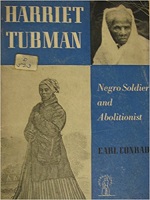 5. Harriet Tubman: Negro Soldier and Abolitionist by Earl Conrad
5. Harriet Tubman: Negro Soldier and Abolitionist by Earl Conrad
Published in 1942, the book chronicles the events of Harriet Tubman’s life.
Conrad wrote the book after meeting Tubman as a young boy in his hometown of Auburn, New York, where Tubman also lived. Conrad explained that meeting Tubman inspired his lifelong interest in social issues, particularly civil rights.
Fellow Tubman biographer Humez said, in the introduction to her book, that Conrad’s was the best Tubman biography to date:
“There have been many popular biographies of Tubman for adults and children produced since her death, but only one work based on careful research into the original sources has as yet appeared: General Harriet Tubman by the politically progressive white writer Earl Conrad, still the standard biography of Tubman. Conrad’s book is both carefully documented and passionately written, yet his Harriet Tubman is still very much a larger-than-life figure. Conrad, a journalist who became interested in black history through experiences as a labor organizer in the 1930s, minimized her spirituality and maximized her role as a militant, an African American woman warrior.”
Another fellow Tubman biographer, Milton C. Sernett, in the introduction to his own book, praised Conrad for using primary sources but ultimately dismissed him as “a journalist, not a trained historian” unfairly implying that only an academic with a PhD can truly understand or write about history.
A review on Goodreads by one of Conrad’s relatives explains how Conrad struggled to get the book published due to racist assumptions from publishers that readers wouldn’t be interested in a book about a black woman:
“This was the first book written by my great uncle, Earl Conrad. He was inspired to write the book by meeting Harriet in their home town of Auburn, NY. This book was published in 1942, after being rejected by over 30 publishers. He states in his book Jim Crow America that all of the publishers gave different reasons for not publishing the book, but they all centered on the racist assumption that a book about a black woman would not be of interest to the general public. It’s crazy to think about how late this book was published (Harriet died in 1913, and did most of the work she was famous for in the 1850s), but also how much our society has grown to accept (and distort) Harriet Tubman’s memory.”
The book is now out of print and existing copies are rare and hard to find.
Earl Conrad, who died in 1986, was a journalist for newspapers such as Auburn Advertiser-Journal, PM, and The Chicago Defender, where he wrote primarily about African-Americans in the South. Conrad later wrote a number of books about black history including Jim Crow America; and The Invention of the Negro.
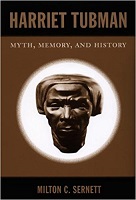 6. Harriet Tubman: Myth, Memory and History by Milton C. Sernett
6. Harriet Tubman: Myth, Memory and History by Milton C. Sernett
Published in 2007, this book is not so much a biography as it is an analysis of how Harriet Tubman’s public image has changed over time.
The book compares the real life Harriet Tubman with the many biographies and descriptions of Tubman to see how accurate they are.
As Sernett explains in the introduction, his goal with this book is to examine why exactly Tubman has become the iconic American hero that she is:
“My intent in the chapters that follow is not to present a biographical portrait of Harriet Ross Tubman in the traditional manner of historical biographers. Instead, I focus on why it is that someone whose life story has been characterized by the distinguished African American historian Benjamin Quarles as a ’tissue of improbabilities verging on the impossible’ has captured the American imagination so strongly, especially in the recent past. Nevertheless, it is hoped that this attempt to sort out the ‘legend’ from the ‘lady’ will enable readers to learn about the woman who has become a cultural icon. This book undertook two tasks. It seeks to recover the ‘historical’ Tubman in the fashion, for example, of New Testament scholars searching for the historical Jesus behind the literary accretions of the Gospel writers. But it is primarily about the remembered Tubman – that is, about the myth that draws on the factual core but is often in tension with it.”
The Journal of African American History reviewed the book and praised it as an important contribution to the topic:
“However, in Harriet Tubman: Myth, Memory, and History, Milton C. Sernett adds to the Tubman scholarship in an original and engaging manner by using Tubman’s life to examine Tubman’s place in U.S. history and investigate how she ‘has captured the American imagination so strongly, especially in the recent past.’ In weaving together the ‘real Tubman,’ the sainted Tubman, and the symbolic Tubman, Sernett re-presents her as a ‘national icon’ who teaches us ‘about ourselves as the American people.’”
Milton C. Sernett is a professor of history and African American studies at Syracuse University. Sernett has written many books about African-American history such as North Star Country: Upstate New York and the Crusade for African American Freedom; African American Religious History: A Documentary Witness; Bound for the Promised Land: African American Religion and the Great Migration; Abolition’s Axe: Beriah Green, Oneida Institute, and the Black Freedom Struggle; Black Religion And American Evangelism: White Protestants, Plantation Missions, and the Flowering of Negro Christianity, 1787-1865.
Sources:
Washington, Margaret. “Review.” The Journal of African American History, vol. 95, no. 2, 2010, pp. 260–262. JSTOR, JSTOR, www.jstor.org/stable/10.5323/jafriamerhist.95.2.0260.
Conrad, Earl. “I Bring You General Tubman.” Taylor Francis Online, 14 April. 2015,
www.tandfonline.com/doi/abs/10.1080/00064246.1970.11430666?journalCode=rtbs20
Conrad, Earl. “The Charles P. Wood Manuscripts of Harriet Tubman by Earl Conrad.” Harriet Tubman, www.harriettubman.com/cwood.html
“Bound for the Promised Land.” Publisher’s Weekly, www.publishersweekly.com/978-0-345-45627-4
Faust, Drew Gilpin. “Then General.” New York Times, 15 Feb, 2004, www.nytimes.com/2004/02/15/books/the-general.html
“Harriet Tubman: The Road to Freedom.” Publisher’s Weekly, www.publishersweekly.com/978-0-316-14492-6
Davis, Bernadette. “Harriet Tubman Gets Her Due.” Bookpage, Feb. 2004, bookpage.com/reviews/3329-catherine-clinton-harriet-tubman
McPerson, James. “The Moses of Her People.” New York Times, 11 March. 2004, www.nybooks.com/articles/2004/03/11/the-moses-of-her-people/
Chesler, Andrew. “Four Best Biographies of Harriet Tubman and the Underground Railroad.” Signature Reads, 9 March, 2012, www.signature-reads.com/2012/03/best-books-harriet-tubman-underground-railroad/

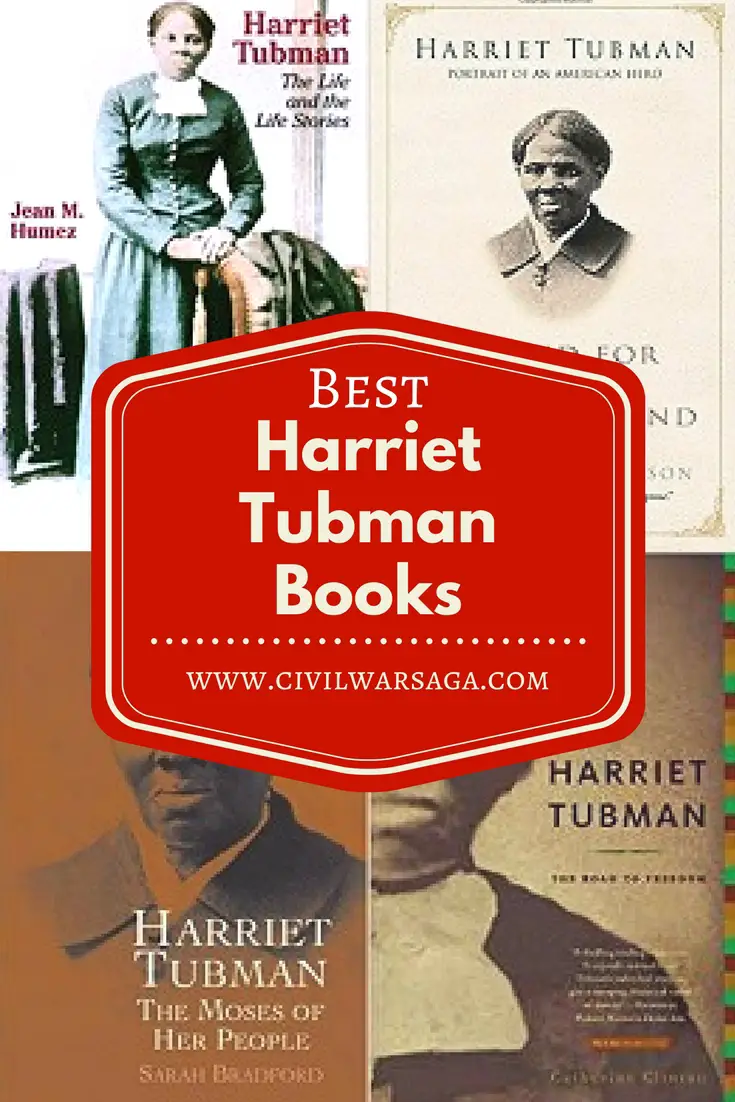
I am writing a thesis on Harriet Tubman and her rise to prominence in American history textbooks. Do you know where I may be able to survey textbooks from the 1970s on? I am researching when and how Harriet Tubman became a national figure and was closely associated with the Underground Railroad. I believe this occurred after the Civil Rights era of the 1960s.
Wow, your thesis sounds really interesting. Sites like ebay, amazon and other sites that sell used books are the only places that I can think of that would have old textbooks. I’m not sure if libraries or other research centers would have them. That’s an interesting question that no one has ever asked me before and now I’m curious too.
As for Tubman’s rise in popularity, I know it was Sanborn’s 1863 article in the Commonwealth Magazine that first made Tubman famous but I think you’re definitely onto something about her rise in popularity during the Civil Rights era.
What about “Freedom Train: The Story of Harriet Tubman” written in 1954 by Dorothy Sterling. I think I read that book 50 times when I was a kid. It was wonderful.
I am unable to locate some of the mentioned books at the San Francisco Public Library any suggestion where they may be found?
A lot of these books are old and may be hard to find. I don’t know what libraries might have them but you can sometimes find old books for sale online.
Thanks for this post. I read Clinton and Bradford and I am reading Larson now. Good recomendations.
I’m an older white woman who learned about Harriet Tubman in the late 1950’s. Try finding old encyclopedias and old history books used by schools in the north.
Earl Conrad’s book was published by Carter G. Woodson and the Associated Publishers as General Harriet Tubman in 1943. it was republished by the Press in 1990 with a new introduction written after his death by his wife. the book was available to the public from the early 40’s into the 1990’s when the Associated Publishers closed their operation. Black Classic Press republished General Harriet Tubman in 2020. the book is availble for all booksellers and on Amazon.
I am looking for a biography of Harriet Tubman that is written by an African American author. I can’t find one. Do you know of one?